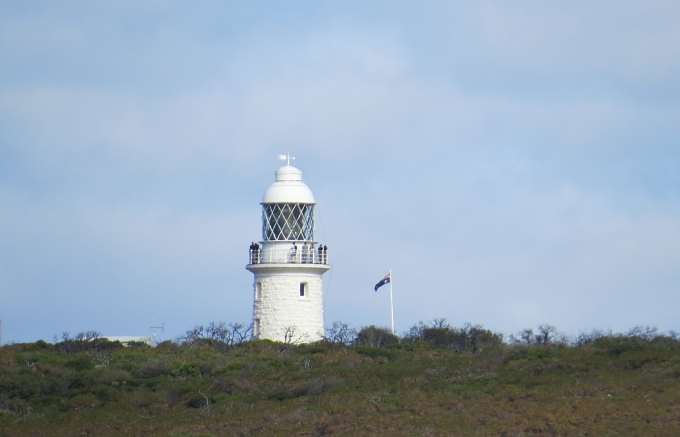Hamelin Bay to Quindalup
/After a relatively peaceful night anchored in Hamelin Bay (read that ... the anchor alarm only sounded once at 0130 when the tide changed and there was no wind), we woke at first light to another cold morning.
To our surprise, there was a buzz ashore and fishermen (tens of them) were lined along the beach enthusiastically fishing for ... what? Salmon maybe? A row boat had strung a net between two utes (pick-up trucks) on either end of the beach, obviously hoping for a big haul. It appears that it's the right time of year here for salmon and the fishermen in Albany had been in a frenzy about it.
We'd seen a pair of dolphins playing near the boat last night and this morning as David unsnubbed the anchor chain, a huge manta ray glided by. Its pectoral fins moving like wings propelled it effortlessly and it swam, ever so gracefully, under, around and behind the boat. We watched ... mesmerized … as its dark silhouette moved just under the water's surface. Too dark, no pics … sorry.
With light W/SW winds forecast, we were not surprised in the least to be sailing with NE 15-20 winds up the coast. We've given up on the weather forecasts and we take what we get. By mid-morning the wind disappeared and we motor-sailed for awhile under thick, heavy gray skies. There was a fringe of pale blue sky hugging the land, but the overcast skies above us, kept it chilly and raw. Rain clouds danced around us, but like yesterday, nary a drop fell on Cups.
We finished up our passage soup for lunch and the sun finally appeared, burning off the cloud cover and warming us up. Off came the jackets and heavy fleeces. Cape Naturaliste came into view and we snapped more photos than you can imagine. It's not a fleeting sight, but rather as we rounded the cape, it provided different views for hours and I just kept snapping. Better clouds in the background here … more blue sky from this vantage point … better sun there.
As we got closer to the lighthouse, we could see people on shore climbing the stairs on the path to the lighthouse and people on the walkway at the top of the lighthouse. I'm already planning our time ashore.
It was the French explorer, cartographer and naturalist, Nicolas Baudin, who led a French expedition to Australia in 1801 … just about the time Matthew Flinders was coming from the east. His two ships, the Geographe and the Naturaliste (captained by Jacques Hamelin … weren't we anchored in Hamelin Bay next to Hamelin Island just last night?) were the first to explore and map the western coast of the continent. He named Cape Naturaliste and Geographe Bay after his ships. According to Wiki, by the way, his scientific expedition was a great success, with more than 2500 new species discovered.
We turned the corner and sailed into calm, peaceful Geographe Bay, mindful of what seemed like hundreds of small fishing boats darting about like flies. The bay is huge and expansive, protected from the Indian Ocean swell and predominant winds. In the distance to the south, we saw a flotilla of masts, and headed for the small town of Quindalup. The bay shallows very gradually and we dropped the anchor in a sand patch in 3.5m/ 12', tidied up and settled in for a peaceful night.
We're feeling less rushed now that we've crossed the Bight and rounded Cape Leeuwin. Everyone we've met has said that this is the best time of year on the West Coast. We have lots to do before departing to cross the Indian Ocean in July, but we plan to enjoy our time here AND get maintenance and repairs completed.







